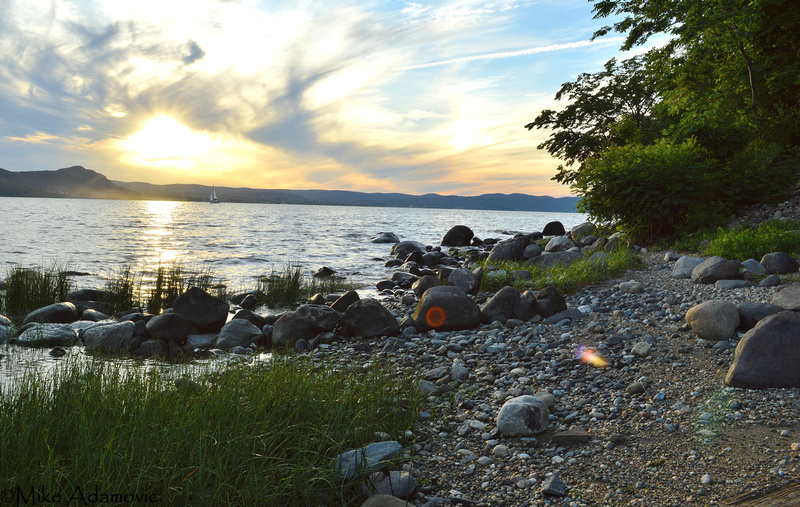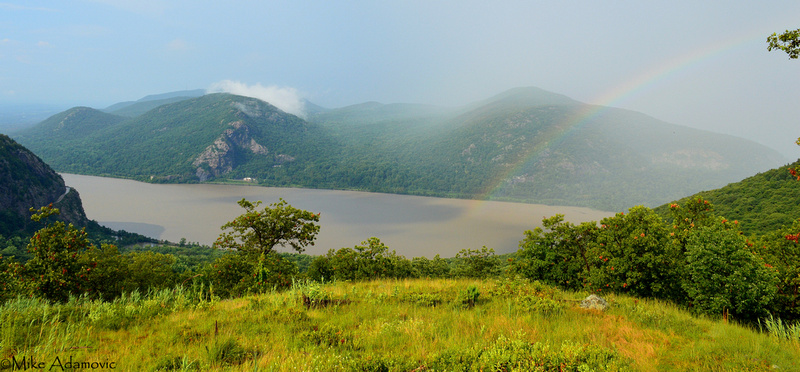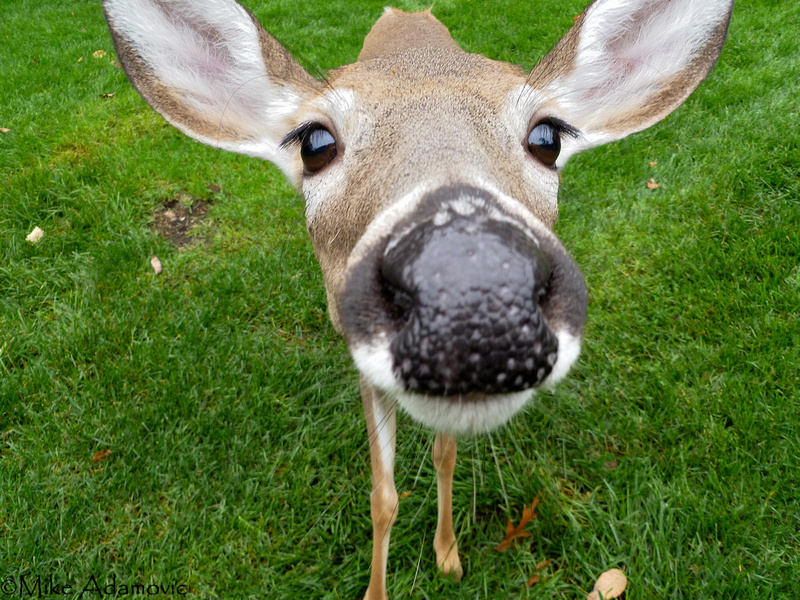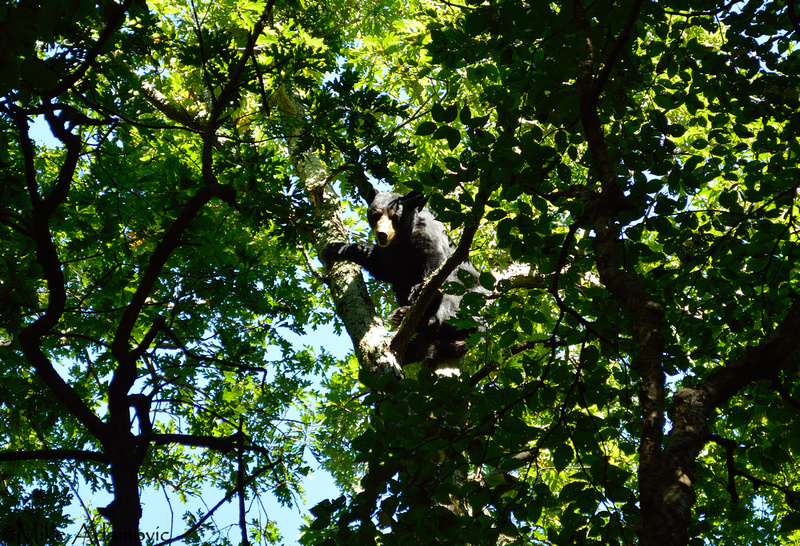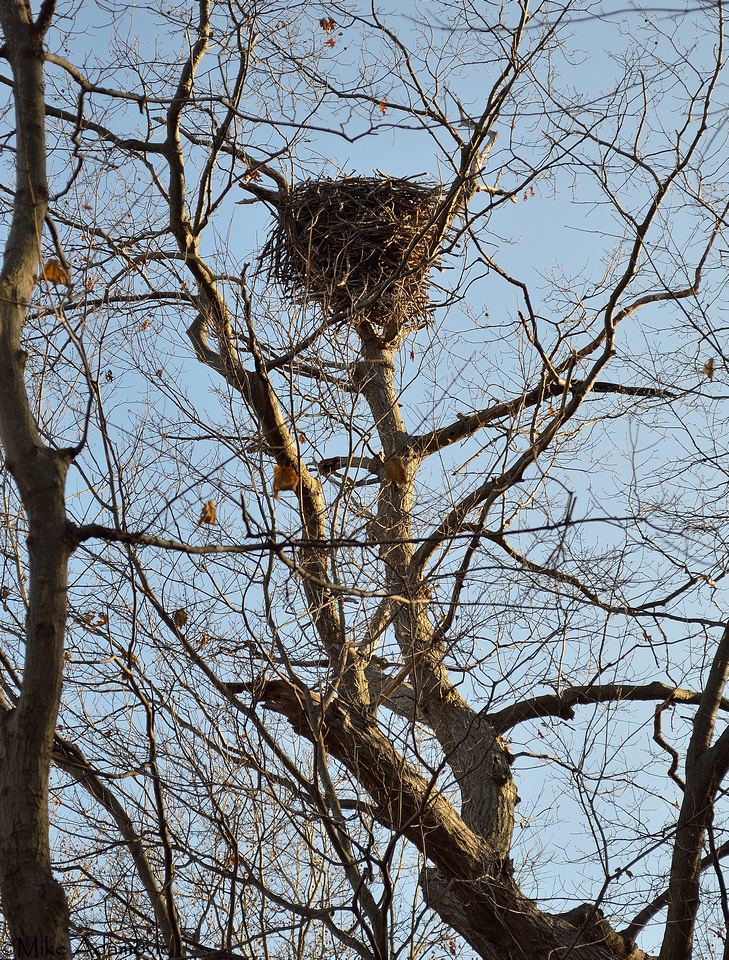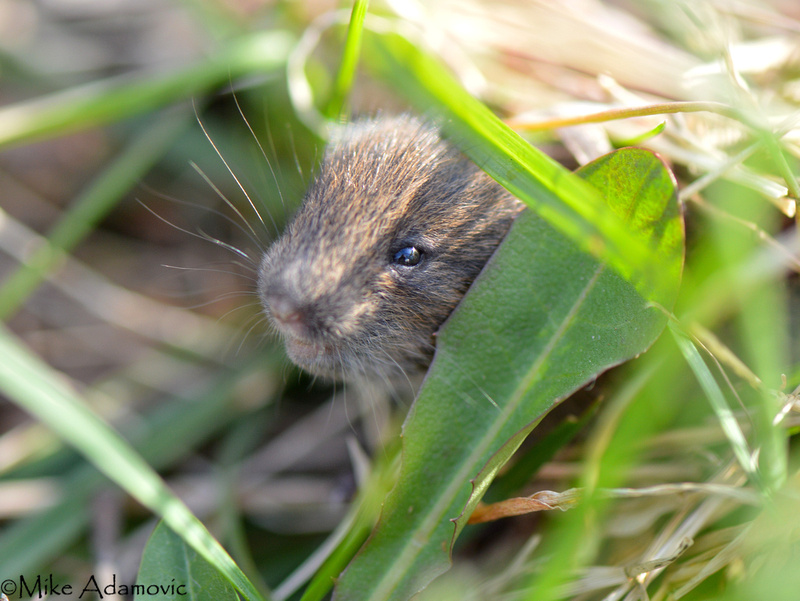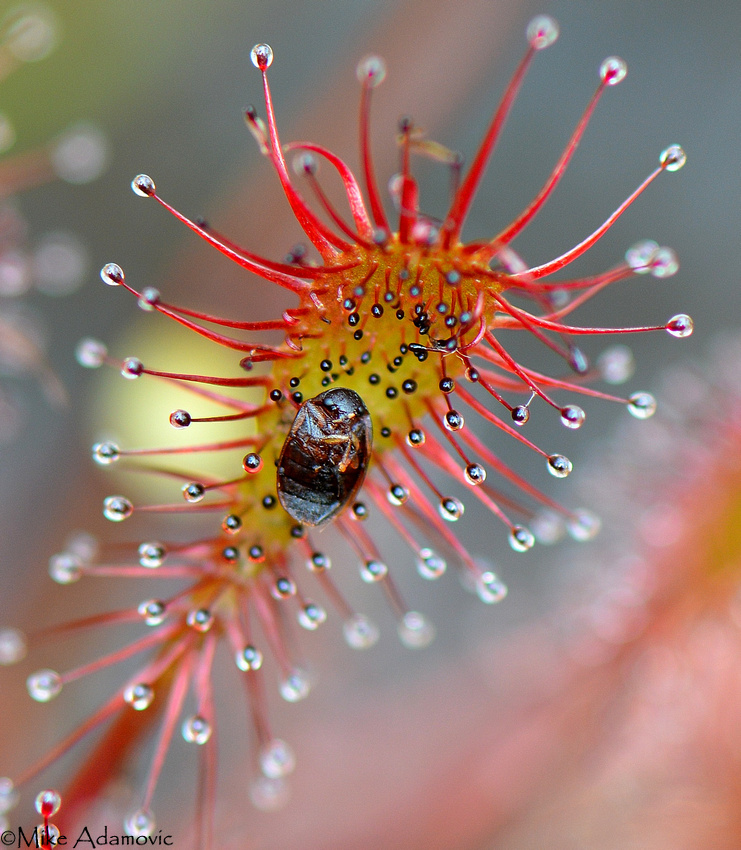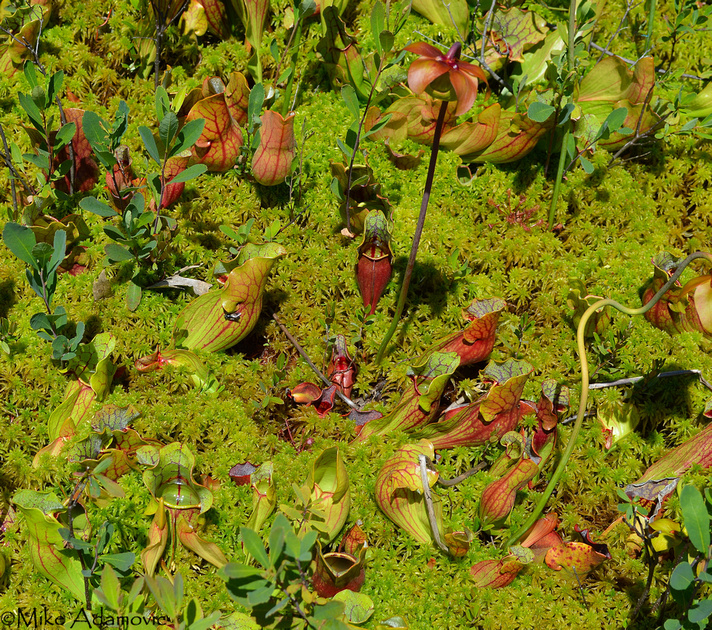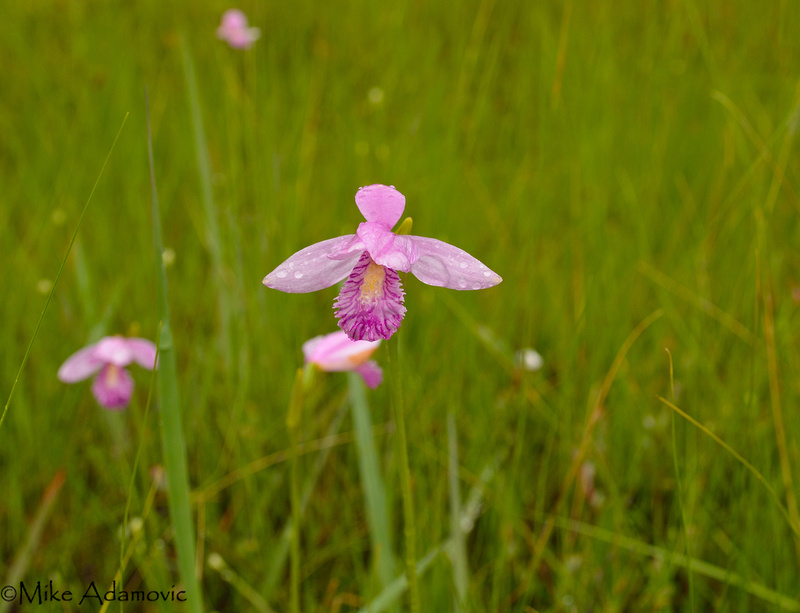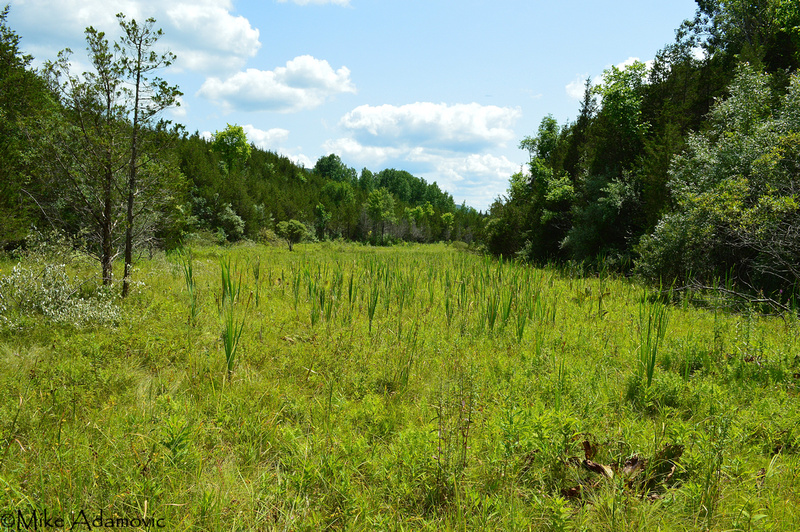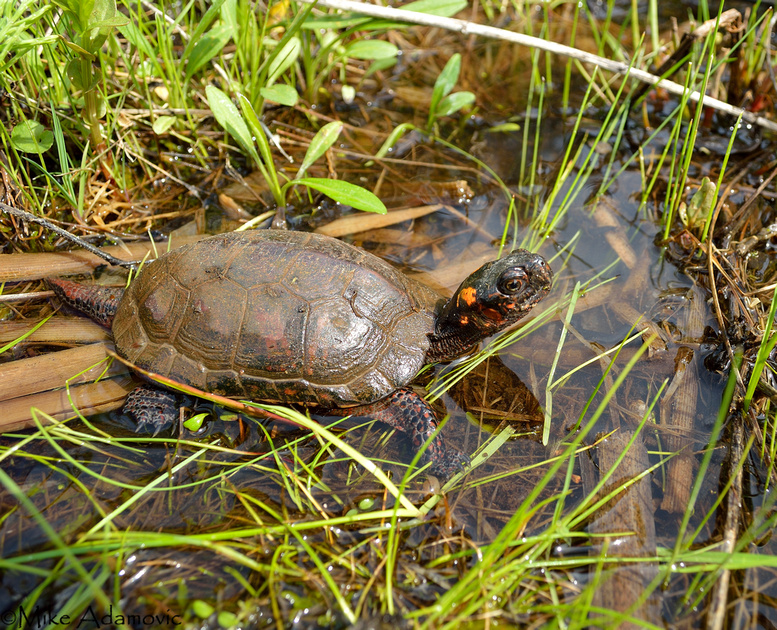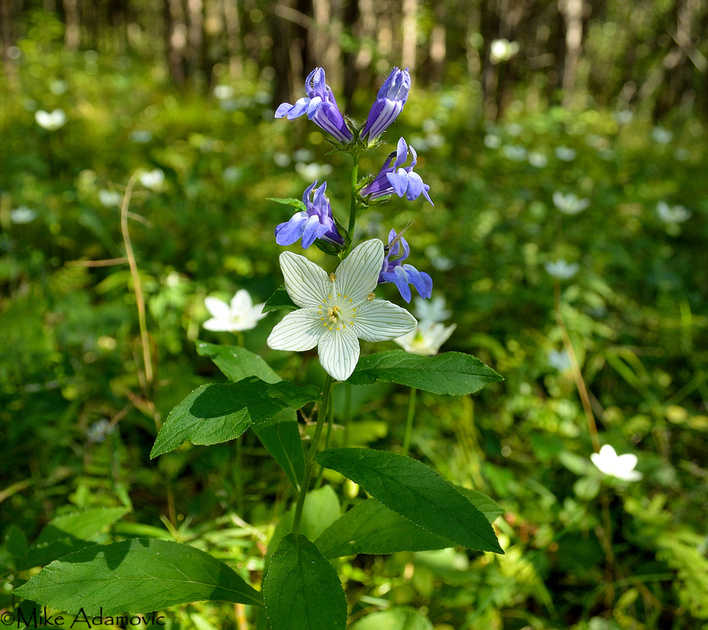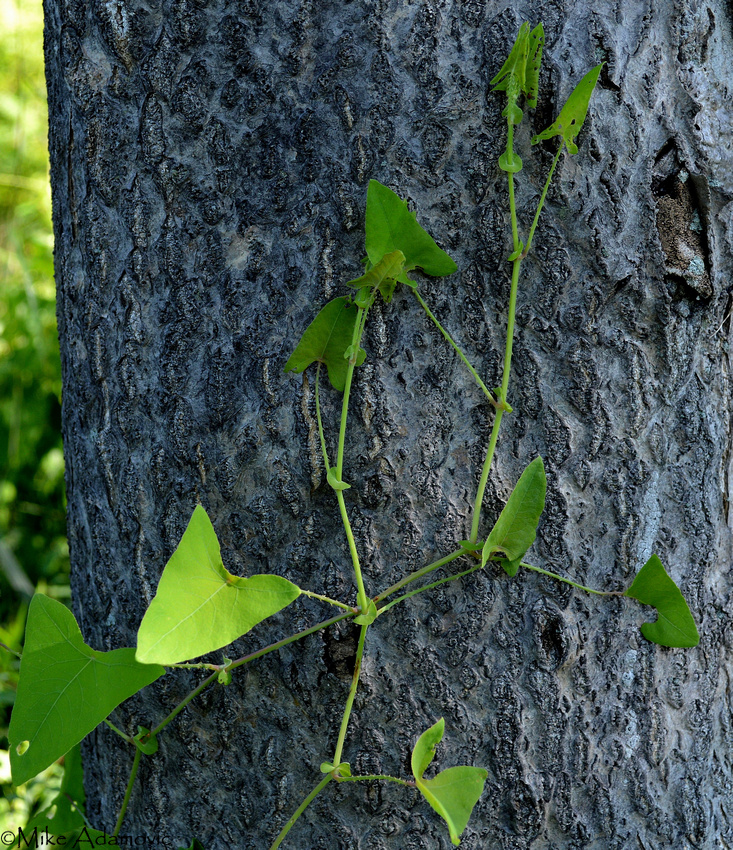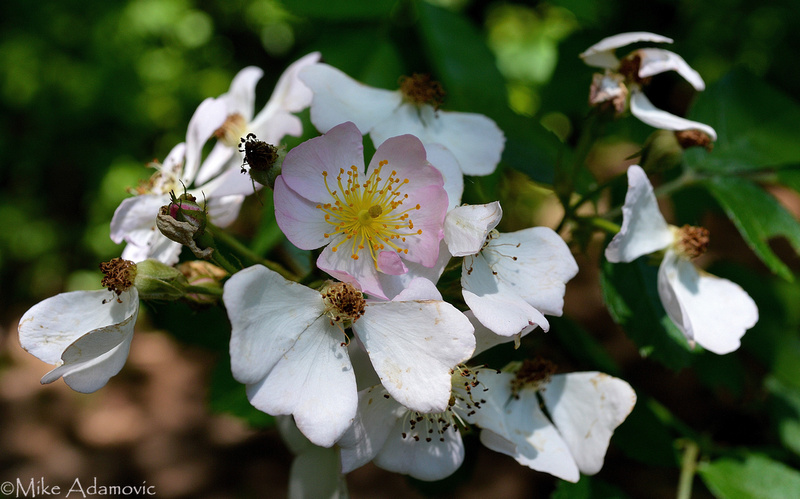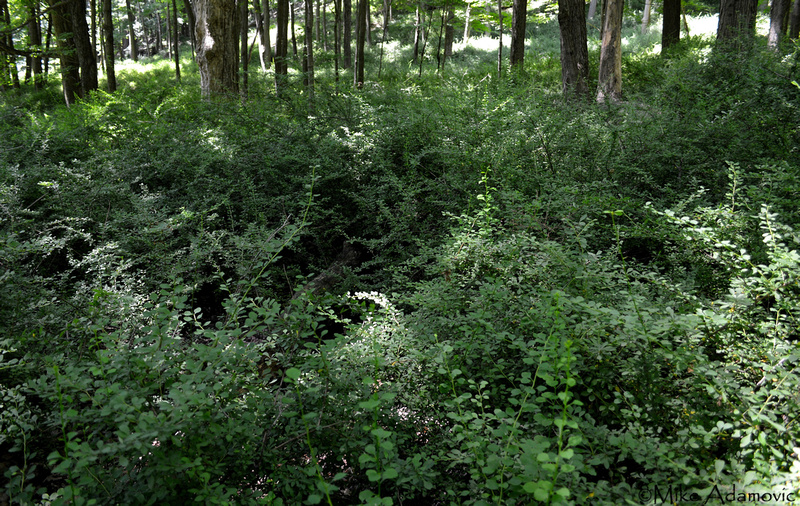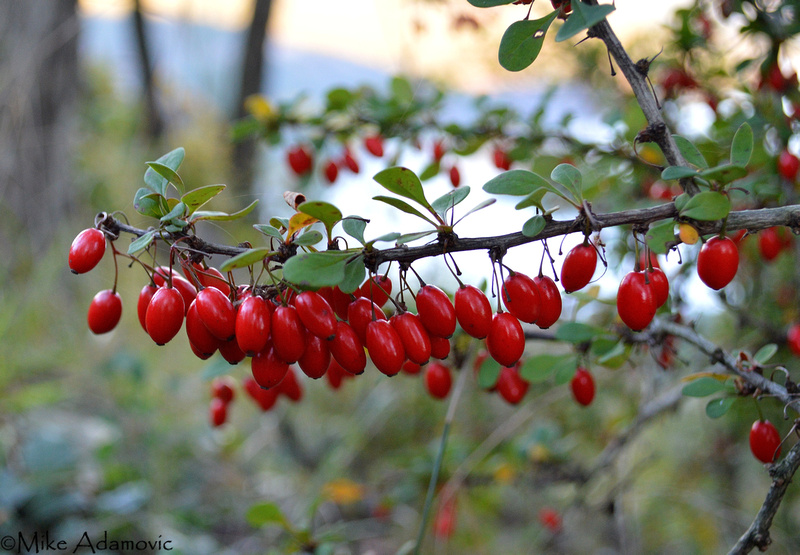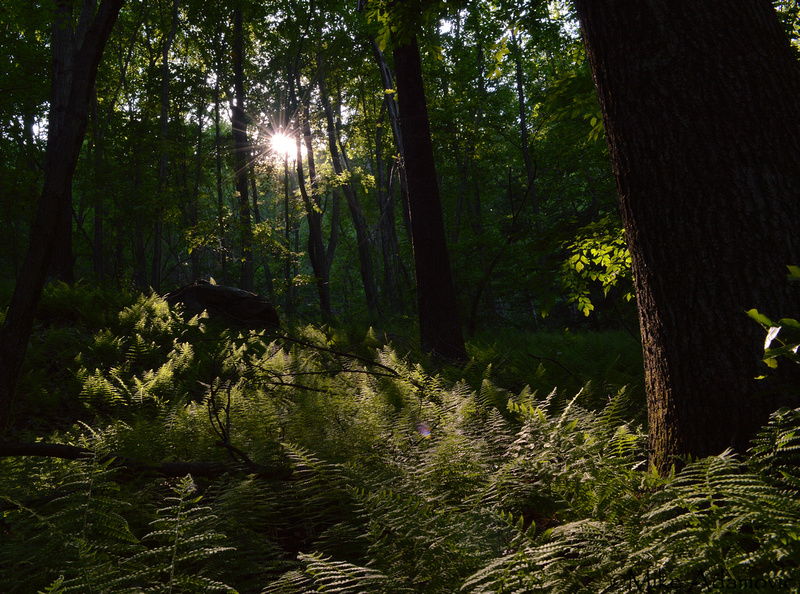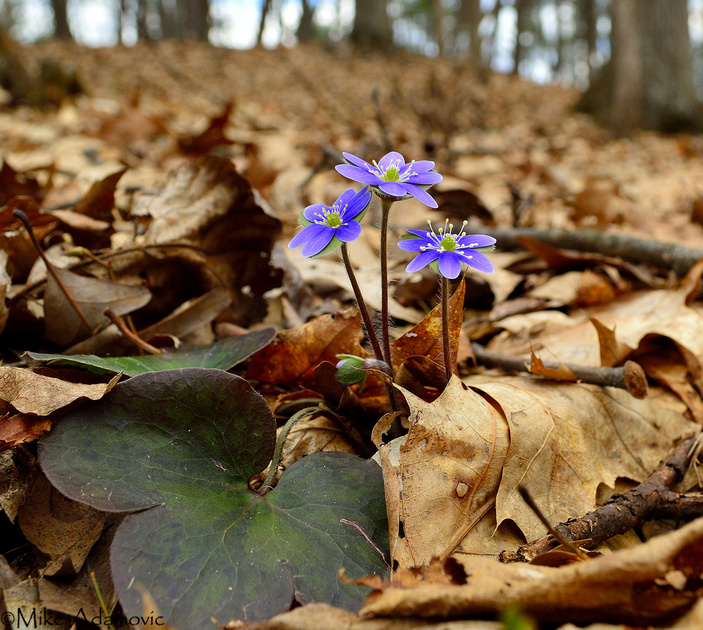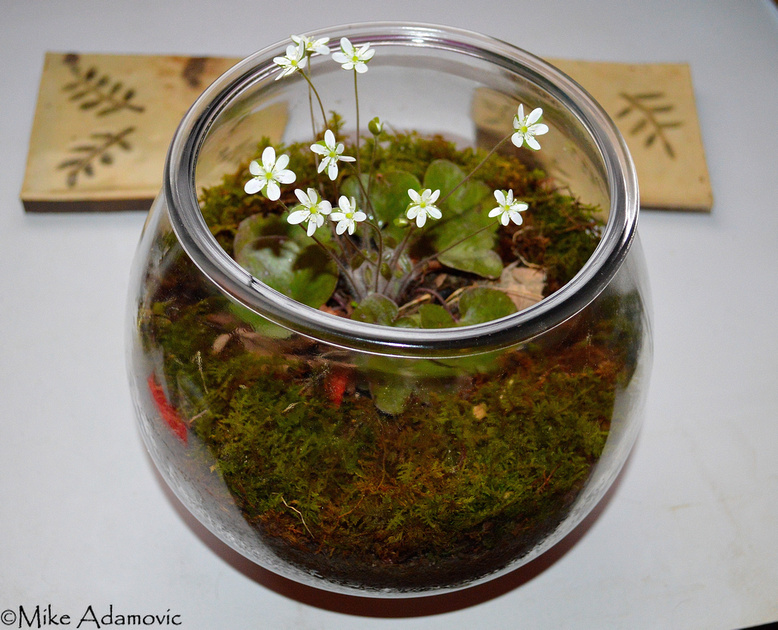Emerson & Thoreau's Nature
"Why should not we also enjoy an original relation to the universe?" Ralph Waldo Emerson penned in the opening lines of his landmark essay, Nature. In it, the father of transcendentalism laments the fact that so many of us blindly follow the path of others, relying little on our own experience because we feel it is unnecessary or impossible to adequately obtain. Instead, he argues, that we should forge a "religion by revelation to us, and not the history of theirs." Essentially, he's saying that the prophets of the past should not hold an exclusive monopoly on pivotal adventure and insight; and that we cannot not solely rely on the judgment of these lucky sages, while disregarding our own. Transcendentalism stressed that each individual uncover their own truths by spending time in the heart of nature. By doing so, it's indeed possible to enjoy an "original relation to the universe," and extract wisdom more personally valuable than what we find in even the most revered passages of sacred texts or the utterances of our elders. Nature is living religion where we get to imbibe straight from the Source. Emerson was amazed how nature possesses the singular ability "to deify us with a few and cheap elements." Crimson rays of light, thin evening clouds, freshly budded trees, and crisp evening air might not amount to much individually, but pieced together naturally in the landscape and they form a moving and inspirational scene that teaches us about the nature of beauty, if nothing else. And beauty, Emerson was convinced, equated directly to truth. "Truth, and goodness, and beauty, are but different faces of the same All." By knowing nature and appreciating its many forms, figures, and arrays of varied color, it's possible to directly glimpse the face of the "Universal Being" and have its currents circulate through us. This is our revelation, our understanding of life's questions, and will serve a better guide than any second-hand account that hasn't been tailored to us. The landscape is more valuable for the impressions it makes upon the mind than by the quantity of natural resources it contains.
When we destroy nature, we deface the artwork placed before us. Will the torn and smudged scene ever make the same impression as before? When we lose nature, we lose beauty, and hence a portion of its refined essences, as morality and virtue, and all other positive attributes that inevitably derive from it. "All things are moral... shall hint or thunder to man the laws of right and wrong," Emerson preached, continuing, "this ethical character so penetrates the bone and marrow of nature, as to seem the end of which it was made." While we find peace and solitude and a respite from all noxious worries in the woods, and seem to think it akin to the feeling bestowed to us from a good night's sleep or calming medication, it in fact soothes not so much from us resting, as from stimulating that which has been slumbering in an unhealthy torpor for too lengthy a time. Moreover, nature offers commodities of more importance than the base-ic necessities of a more tangible nature, such as lumber, ore, or crops. Our language and habits of speech are closely related to our natural surroundings, and invariably so are our thoughts. We most frequently speak in analogies tied to elemental forms. "Light for knowledge" and "heat for love" are but a couple analogies of common vernacular that show how we prescribe natural elements to human thought. Their directness and simplicity are understood by all. But when we begin to use language for "secondary desires," selfishly applying words or phrases that show the significance and splendor of nature to hollow goals or strivings in order to increase our standing in some way, society as a whole takes a loss, as these words lose all their potency and fall flat, and in turn, nature becomes valued less, cheapened by attachment to vain longings, as riches, power, or praise. Emerson was sure that the "corruption of man is followed by the corruption of language," for as he observed "a man's power to connect his thought with the proper symbol, and so to utter it, depends on the simplicity of his character, that is, upon his love of truth." The poet in his estimation was the foremost of men. Poetry is language in its purest format and those who truly and dutifully ascribe words in such a way share a kindred relation to the influences of the natural world. Art is an imitation of nature and even a minor look throughout the artificial world we've created forcefully demonstrates the level of thirst we possess for it. Art thoroughly surrounds us, just as the forests and the vast sky arching overhead does. "'A gothic church,' said Coleridge, 'is a petrified religion.'" Analogy runs deeper than speech; it inspires and excites passionate action. We seek to bring nature closer to ourselves. These creations keep us attached to it even when far removed from the fields and forests.
*** With all of this philosophy in mind, Henry David Thoreau, the promising pupil and adherent of Emerson, also cultivated ideals thoroughly suffused with a nature-centric dogma. He similarly, and perhaps even more staunchly, believed in the value of the individual forging a life built atop the foundations of personal experience, rather than tradition. In his most prominent work, Walden, he insists "No way of thinking or doing, however ancient, can be trusted without proof." Thoreau informed his readers that instead of living through the eyes of others, it was possible to saunter into the "Holy Land" simply by taking a walk outside and roaming through the wilderness. Unlike Europe which had long ago exhausted its soils and littered the landscape with dwellings, the U.S. in comparison was a vast oasis of original splendor. This open and pristine country was equivalent to what existed in Europe hundreds to thousands of years ago, before the "foundations of castles" were laid, "famous bridges" created, and heroic fables told. Thoreau viewed Americans as being extremely fortunate in having a new template to work upon and learn from. To him, modern times were "the Heroic Ages itself" in which contemporary society was forging tales that would probably someday be revered the same as those from the past which are now commonly held in esteem. Most people have difficulty in perceiving this because "the hero is commonly the simplest and obscurest of men." In short, the quantity of open and unaltered space we possess, is proportional to the amount of unique experiences we can have. By preserving nature—saving expansive mountain tops and cramped valley hollows, thick verdant forests and slow moving rivers, the playground of the universe is also preserved, providing us with unending opportunities and delights. And what of our rapidly shrinking world? With land being heedlessly sold, subdivided, and with what Thoreau described as "walking over the surface of God's earth" being "construed to mean trespassing," how are we to get the most out of what currently remains in more developed areas?—simply view the landscape from afar. This, too, will satisfy many desires and similarly move and impress. The view of the whole, the larger picture, is ultimately of more worth. To this, men's "warranty-deeds give no title." The abstractness of the scene, far from solid and dictating, allows us to obtain what we ourselves determine to be valuable from it (i.e. the higher secreted qualities). But according to both Emerson and Thoreau, only those who have a keener and more subtle vision than the rest, "can integrate all the parts" and thus, unlock the items of value. Such vision, that which allows the sun not merely to illuminate the eye, but also "shine into the heart" belongs to those who understand the true purpose and nature of Nature, the poetically minded.
Thoreau elegantly put it like this: "I have frequently seen a poet withdraw, having enjoyed the most valuable part of a farm, while the crusty farmer supposed that he had got a few wild apples only. Why, the owner does not know it for many years when a poet has put his farm in rhyme, the most admirable kind of invisible fence, has fairly impounded it, milked it, skimmed it, and got all the cream, and left the farmer only the skimmed milk." Individual components are only as important as the level in which they blend into the landscape in a harmonizing way, as individual letters help form coherent words that give rise to sentences. The inseparable unions of rhythm and order, beauty and truth, only arise when we combine and expand our perceptions on a universal scale, and not, rather, constrict them to the microscopic view of what's directly before our eyes. Emerson concisely sums it up: "In the tranquil landscape, and especially in the distant line of the horizon, man beholds some[thing] as beautiful as his own nature."
Wildlife of Oak-Hickory Forests
Southern New York is dominated by Oak-Hickory forests, which as the name implies, are primarily composed of members of these two mast-producing genera. The nuts produced by various oaks and hickories are an invaluable resource that generously provides for the region's wildlife, and is the prime reason our forests boast such a prolific and eclectic array of species. Squirrels, of course, feast on them, but so do many other creatures. Turkeys, blue jays, raccoons, rabbits, chipmunks, and deer regularly browse on fallen nuts. Scratch marks and associated mounds of leaves often dot the understory in mature forests where hungry animals have rooted around in the detritus to uncover those meaty morsels that have become concealed by natural or deliberate means. Bears consume them as well; and in addition to scavenging those among the understory, can be seen in late summer and into early fall taking a more active collection method by ascending even the narrowest of trees to strip clusters of nuts directly from the branches. Seemingly cumbersome and awkward, bears are actually quite agile and appear to have little difficulty in their acrobatic endeavors. Snakes and raptors benefit indirectly from the nutty profusion by feasting on the hefty rodent population that abounds nearby.
Before an exotic fungus was accidentally introduced to the U.S. in the early 1900's, the American chestnut comprised nearly a quarter of the trees in what was then known as Oak-Chestnut forests. Tree mortality rate from the resulting blight was nearly 100%. And with this lethal invasive fungus still hanging around on chestnut root resprouts, these once lofty trees will probably never return as a canopy species. Far larger and meatier than most other nuts, the loss of the chestnut was a major blow to wildlife and radically reshaped the composition and health of our forests. For decades as the blight swept across the land, trees quickly sickened and toppled like dominoes within 2-3 years of infection, turning once robust ecosystems into skeletal versions of their former selves. Forests are still recovering.
Human short-sightedness almost also caused another cherished feature of America to forever vanish.
Bogs and Fens
Sundew
Wetlands exist in many forms, the most common of which are lakes, swamps, and soggy riparian areas surrounding streams and rivers. Rarer types include bogs and fens. This latter class comprises only a small fraction of wetlands found throughout the Hudson Valley. Both are outliers, and if placed on a Bell curve would fall on opposite ends of the spectrum. Bogs contain highly acidic water, while fens possess more neutral to alkaline conditions. These wetlands have drastically declined over the last few centuries, a result of the misinformed belief that they are little more than smelly, detrimental mosquito breeding grounds. Many were dammed off and transformed into more usable ponds and lakes; others buried to make way for agriculture and development. These disappearances are a great loss. Bogs and fens alike contain many one of a kind organisms that are specially adapted to survive in extreme conditions and are found in few other places. Despite their often times small size, the diversity of life they contain is quite high. In the Northeast, bogs are more plentiful than their alkaline counterparts. These peaty wetlands, normally occupying glacially scoured depressions, receive an unusually low pH by effectively being bottled up and stewing in a broth of humic acid released by the degradation or organic matter. The primary inflow of water is from precipitation. Comparatively small influxes of water, in conjunction with little run-off, results in acidic conditions that inhibit decay. Dead plant matter rapidly accumulates, forming thick layers of peat that keep valuable nutrients imprisoned within. Certain plants have circumvented the nutrient-poor conditions by taking on a feature characteristic of animals—carnivory. Pitcher plants, sundews, and bladderworts, have evolved specialized mechanisms to capture and digest insects to obtain key elements like nitrogen and phosphorous. Along with these plant oddities, bogs are dominated by quaking mats of sphagnum mosses and heaths (highbush blueberry, azalea, leatherleaf). Fleeting displays of rare orchids routinely add a touch of vibrancy to the scene, often serving as the highlight of a visit to those lucky enough to encounter them in bloom.
Pitcher Plants & Sphagnum Moss
Rose Pogonia
Aside from having a vastly different pH, fens differ from bogs by receiving significant water inputs from groundwater sources as well as precipitation. Upwelling springs and small braided streams supply a bulk of the moisture. Alkaline conditions are imparted to the system from the underlying rock strata, which in the case of our regional calcareous fens is normally limestone. The largest concentrations of these alkaline wetlands occur in Dutchess and Columbia counties. Due to a greater abundance of available nutrients, plant communities here contain a higher number of species than can be found in their acidic cousins. Unlike bogs that are clustered with shrubby heaths, the most prominent members of fens are grasses and sedges, making them resemble moist meadows. Several orchid species thrive among the knee-high vegetation, in addition to the "calciphiles," uncommon to rare plants tolerant of high calcium levels that live almost exclusively in limy soils. The reclusive bog turtle, an endangered species and smallest native turtle in America, also primarily makes its home in places such as these, despite its misleading name. Calcareous fens are one of the rarest natural communities on the continent and normally occupy no more than a handful of acres.
Calcareous Fen
Bog Turtle
Fringed Gentian
Grass-of-Parnassus & Great Blue Lobelia Alien Invasion: The Proliferation of Invasive SpeciesAs a naturalist, one with an especially keen interest in botany, I devote much of my time, both occupationally and recreationally studying, photographing, and writing about plant life. I find our green and oxygen providing friends fascinating—not only with their oftentimes mesmerizing physical beauty, but also with their unique adaptations that make glimpsing into the marvels of evolution possible. It is therefore with regret that I find it necessary to allot time here to address the depressing topic of invasive species proliferation, rather than perhaps writing about a rare orchid, or detailing the lives of bog plants that specialize in carnivory. The term "invasive species" is defined as a non-native organism that has a tendency to rapidly and prolifically spread throughout an environment, causing ecological upheaval and degradation. Essentially, invasives cause damage to everything they touch, from evicting important native species locally (ultimately causing their widespread decline) to more immediate pecuniary matters, such as dropping property values by creating tangled, unsightly messes. It's a major problem that will not improve anytime soon. As someone who's immersed himself in researching and implementing new invasive control methods, I know firsthand that even the most advanced techniques are mediocre at best. Invasives are hardy, and above all, prolific. When human armies of volunteers hand pulling vines or uprooting shrubs isn't enough, we switch to armies of insects to defoliate them, but these, alas, can only eat so much. Take the Asian mile-a-minute vine (Persicaria perfoliata), for instance. A lightning fast grower in the plant world, capable of reaching lengths of 30 feet a year, this is a species that can't be adequately controlled by the typical manual hand-pull. Instead, we have switched to releasing biocontrol agents, namely, in this case, a tiny weevil that hails from the same exotic location as mile-a-minute and consumes nothing but it. The checks and balances that once kept invasives in line in their homeland cannot often be introduced to the U.S. to combat these leafy invaders for obvious reasons—few of these invasive predators confine themselves solely to one species, and could possibly become invasive themselves if imported. Only through intensive and vastly expensive research can we derive these mildly effective strategies to rid ourselves of invasives. It seems then, that prevention is the best cure.
Mile-a-Minute Weevils (Rhinoncomimus latipes)
New York has recently enacted regulations to curb the further introduction of invasives by outlawing the sale of several particularly noxious species. A majority of these plants have been used in decorative landscaping in the past, escaping into the wild most frequently via seed scattering wildlife. What makes them so damaging is their propensity to exploit and thrive in disturbed or degraded environments better than most natives. Their quick colonization gives them an edge by providing a defensive position; beleaguered natives, in contrast, must try to reconquer their lost land against a more numerous and robust enemy. Increased awareness to the problem and stricter regulations regarding the distribution of these damaging organisms by retailers is a step in the right direction. Unfortunately, the landscape is already greatly sickened, suffering from an unending illness that daily drags it further into dismay. Facing an onslaught of environmental disasters such as habitat destruction, global warming, acid rain, among numerous others, the addition of invasive species into the mix on a level higher than what it currently stands at could be what pushes things over the edge. While we can reduce our carbon emissions to ameliorate climate change and acidification, and restore habitat by revegetating it, it is impossible to wholly remove non-native species from the environment. It's a quandary akin to the opening of Pandora's box. And like the released sufferings of mankind, we are constantly bombarded by an invasive presence. They tauntingly thrive along forest edges, open fields, and in our own yards where unplanted. Startlingly, most roadsides boast a higher composition of alien species than they do natives. While many of these fall into the Old World weed category (dandelion, chicory, mullein, etc.) and aren't especially detrimental, they are nevertheless alien, and have supplanted an important native plant. But why should we particularly care that invasives have taken hold, especially when many are imbued with an exquisite beauty on a level surpassing their native counterparts? While it's true that in terms of showiness invasives can, and do, compliment the landscape by adding bursts of color where otherwise dull monochromatic hues dominate, they typically upset the intricacies of an ecosystem. While I admire the pleasing tints given to a wetland by dense arrays of the invasive purple loosestrife, whose long spires cloaked in splendid deep evening hues turn the earth into a twilight wonderland, my overall opinion of the scene is one of dismay. Beyond the hazy smokescreen of color lies a litany of problems. Increased biomass input results in waterways becoming clogged, which given enough time will fill in with sediment and the remains of decaying plants so that the system ages prematurely, transitioning into a drier habitat centuries or millennia ahead of its destined time. Blankets of loosestrife which can top out at 10 feet tower above other plants shading them out, which when rare, helps to extinguish a species from existence. To me, there's nothing more beautiful and impressive than a healthy and well-functioning ecosystem that operates flawlessly to provide for the thousands of creatures, both large and small, that inhabit it. An invasive plant throws a ratchet into the gears. Some will argue that since many non-natives are now firmly established they should be left alone, given some of the benefits they do in fact offer. It's true, invasives, in certain cases, can positively affect an ecosystem by providing shelter or food to organisms in need. The negative consequences, however, as already noted, generally outweigh the positive attributes. I often lump critics of invasive control with those who feed wildlife, such as geese or deer. They often mean well, but their misguided beliefs ultimately cause more harm than good in the long run. Multiflora rose (Rosa multiflora) is one such invasive that offers both nourishing food and heavy cover. In late May or June the shrub produces copious quantities of white flowers that provide a tasty meal to insect pollinators; while during the fall and winter its saccharine rose-hips are feasted on by birds. Moreover, it expands quickly and in short time resembles something similar to an unruly tumbleweed. It's capable of towering well above head height and growing to lengths of over 15 feet. Its tangled branch-like canes are excellent for concealing smaller sized birds that will frequently choose the thick shrubs as nesting sites. Small mammals, such as rabbits, often use the groundcover to avoid predators, quickly fleeing to the safety of the thorn filled mess upon the slightest sign of danger.
Multiflora Rose
When these roses spring up in old fields or pastures, which they are apt to do, they make it difficult for ecological succession to occur. The denseness of the shrubs tightly packed together exclude trees from gaining a foothold. Normally as the trees mature and gain in height their lofty branches shade out the shrub layer and make way for a proper forest. Extraordinary shrubs, like multiflora, inhibit this natural succession by keeping the old field environs in a quasi-pasture state, where it remains in a sickly adolescence indefinitely. Apart from the ecological ramifications of this, these briar patches are a great nuisance to farmers and landowners who have their properties overrun by endless snarls of shrubs that scratch and bite the passerby with their fishhook-like thorns. Hikers and anyone else who happens to spend a good deal of time outside has surely endured the tedium of navigating through a patch of multiflora, always on the alert to avoid getting tangled in the wiry canes and ultimately cut up. When patches encroach on hiking trails or ecologically sensitive habitat it becomes necessary to remove them, not by means of herbicide or biocontrol insects, but by good old fashioned manual labor. I've endeavored many a time to scrub land clean of these noxious pests, which, by the way, is a Herculean task on par with descending into bowels of perdition to extinguish the ubiquitous hellfire by means of a squirt-gun. It's slow, tedious, and above all, painful work. Even the thickest clothing and leather gloves will soon gain such a riddling of holes as to become useless, as the 1/4 inch thorns relentlessly probe the garments, similarly to a mosquito's quest to draw blood. And it's not enough to simply clip the canes, the roots must be dug out as well, or they will regrow back with a vengeance. It is for all these reasons that multiflora is by far my least favorite invasive, though by no means the most damaging of the bunch.
Multiflora Thorns
I can't stress enough the importance of removing multiflora, or any other invasive for that matter, when they're still young and controllable. Left to grow unchecked and what was once a mild problem will balloon into what can best be described as a malignant tumor spreading its contagion throughout the rest of a once otherwise healthy system. For example, if a modest specimen of multiflora is allowed to go to seed it can produce a million seeds a year, each of which possesses the capability of surviving in the environment for up to 20 years! This type of fecundity is the norm for most invasives. What is most worrisome in this crusade is the public's abysmal plant identification skills. That so few people can correctly identify a plant, let alone decipher whether it's native or alien is alarming. If we are to succeed in stymieing their further establishment and proliferation it is imperative we can distinguish friend from foe, and uproot the latter whenever encountered. The worst offenders, at the very least, should be put into the pot of common knowledge via amendments to course curricula, public service announcements, and broadcast in a variety of other similar means. Moreover, to avoid introducing additional seeds and new species into the mix we must alter our ways when it comes to the types of species utilized in garden projects and landscaping. The traditional array of plants used in years past now belong to a bygone era. Instead of sticking by these garish and cliché cultivars, more plastic in nature than plant-like, natives which blend into and become a part of the landscape, vigorously provide for local fauna, and demonstrate ecological awareness and sensitivity should be put to use instead. Nurseries specializing in native flora are rapidly proliferating and provide every element needed to make a yard or property wholesome and alluring.
Japanese Barberry
I've always been especially captivated by the early descriptions of the New World by explorers hailing from the crowded environs of Europe. Compared to the exhausted and overly tilled countryside of their homeland, America was a verdant paradise, an Eden. What they found and recorded was almost too fantastic to be believed by their countrymen overseas. And unfortunately for contemporary society, these renditions are now equally as foreign to us. Forests stretching uninterruptedly into the distant horizon gave credence to the belief that these tracks of wild land contained "such an abundance of wood that it will never be wanting." How impressive and dominating the landscape must have appeared for this thought to arise! The ravenous consumption of wood back in the Old World was something that couldn't be ignored, and yet, despite this, American forests appeared to be endless and inexhaustible, comprised of titanic and ancient trees of every shape and dimension that overwhelmed the senses. Such a vast and seemingly boundless wilderness, one teeming with bear and wildcats, swarming with sky-blackening flocks of passenger pigeons that feast on a rich and eclectic diet of vivid berries and meaty nuts, and an understory lined with sweet smelling grasses and flowers that perfume and permeate the air, is now but a distant memory that continues to grow fainter every day as habitat destruction erases the last degraded pieces that remain and link us to the past. To prevent our new world from becoming the same as the old we can partially restore (albeit modestly) what has been lost. Everyone has the capability to make a difference, and like most things, these changes first begin at home. Hedges of multiflora, Japanese barberry, and forsythia can be substituted with rows of native bayberry or highbush blueberry. In terms of climbing vines, why use English ivy, silverlace vine, and porcelainberry, when the equally beautiful wild clematises, with their delicate white or purple blossoms, and the groundnut with its sweet-scented chocolate-hued flowers, can bestow a similarly lush and sophisticated looking drapery? And lastly, those garden beds—instead of populating them with ostentatious and yawn producing aggregations of tulips and daffodils, plant flowers with more depth and intrigue, such as the underappreciated violets, ivory petaled bloodroot, and vivid red columbine. See where I'm going with this? Any non-native ornamental can easily be replaced with a more unique and essential native. Renew the landscape. While much of what has been lost is irrecoverable, let's take back as much as we can. Why should we be content to leave the best wonders consigned to the pages of some musty book?
Spring's First Wildflower: Hepatica
To those weary of winter the first bit of relief can be found sprouting amid heaps of decaying leaves at the end of March or the beginning of April. Hepatica, one of the earliest arriving wildflowers and harbinger of the spring season, emerges from bleak forest floors to decorate the surroundings with vivid arrays of pastel purple, lavender, pink, and white. It's an exotic departure from the monotonous hues of winter that have heavily dominated the landscape for months. Though somewhat small, these flowers pack a rather large punch and remind us that renewal is close at hand.
|
